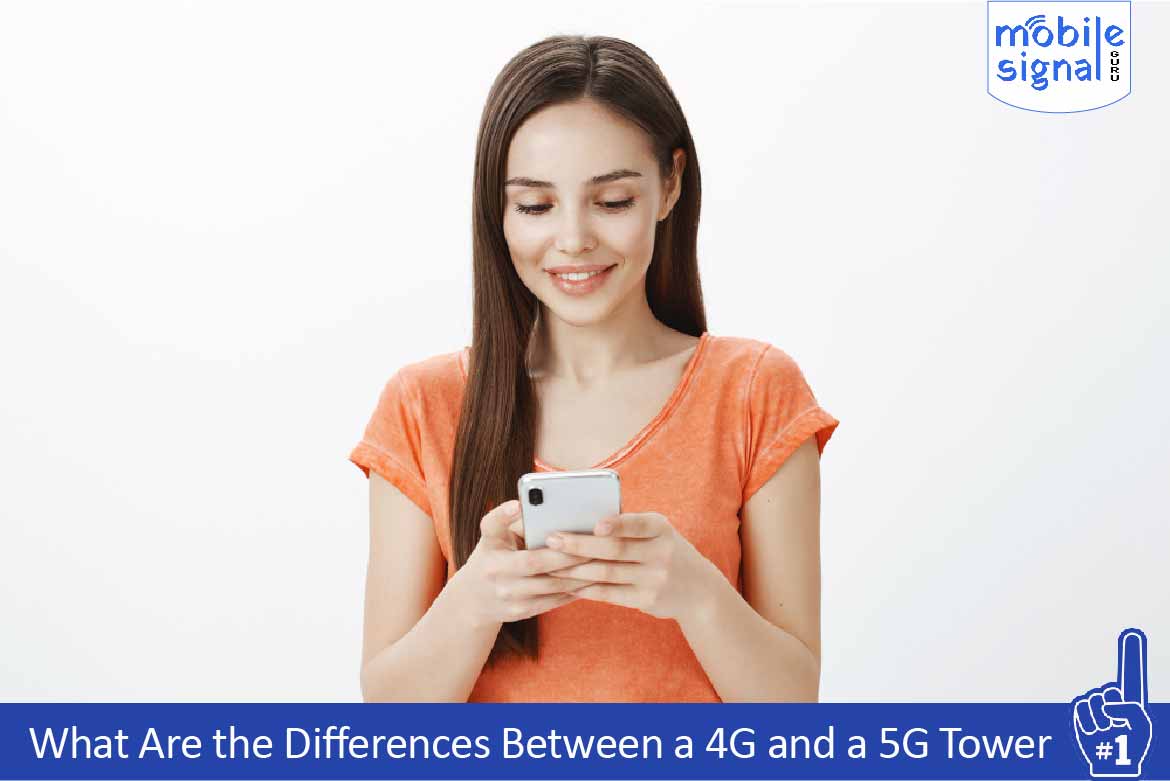In today’s fast-paced world, mobile connectivity is essential. The shift from 4G to 5G technology marks a major step forward in telecommunications. But what makes a 4G tower different from a 5G tower? Let’s explore their key differences in terms of design, performance, functionality, and technology.
1. Speed and Data Transmission
The main difference between the 4G and 5G tower is speed and data transmission, which is as follows:
- 4G Tower: 4G towers support faster speeds than older 3G networks. However, they typically max out at around 100 Mbps for download speeds.
- 5G Tower: 5G towers offer blazing-fast speeds, reaching up to 10 Gbps. This makes streaming, gaming, and data-heavy tasks seamless.
Why It Matters: 5G enables real-time data transfer with minimal delays, while 4G often struggles with high-bandwidth applications.
2. Latency Differences
- 4G Tower: Latency for 4G is around 30–50 milliseconds. This delay can impact real-time interactions.
- 5G Tower: 5G reduces latency to as low as 1 millisecond. This near-instant response supports advanced technologies like self-driving cars and remote surgery.
Takeaway: Lower latency in 5G improves overall user experience and supports emerging technologies.
3. Network Density and Capacity
- 4G Tower: A single 4G tower can handle fewer connected devices. Overcrowding can reduce speed and performance.
- 5G Tower: 5G towers are designed to connect many devices simultaneously. This is ideal for smart cities, IoT (Internet of Things) devices, and dense urban areas.
Why It’s Important: With 5G, everyone in a crowded stadium or city can enjoy reliable connectivity without disruptions.
4. Frequency Bands Used
- 4G Tower: 4G relies on lower frequency bands (600 MHz to 2.6 GHz). These frequencies offer broader coverage but slower speeds.
- 5G Tower: 5G uses a mix of low, mid, and high-frequency bands. High-frequency millimeter waves (24–100 GHz) allow faster data transfer, although they have shorter ranges.
What It Means: 5G towers balance speed and coverage using a variety of frequency bands, unlike 4G’s limited approach.
5. Tower Design and Placement
- 4G Tower: 4G towers are often tall and spaced far apart, covering wide areas with fewer installations.
- 5G Tower: 5G requires smaller, more numerous towers. These “small cells” are placed on streetlights, buildings, and poles to ensure dense coverage.
The Big Picture: 5G’s shorter range means more towers are needed, especially in urban environments.
6. Energy Efficiency
- 4G Tower: 4G towers consume more energy for lower data transmission rates.
- 5G Tower: 5G towers are more energy-efficient, delivering higher speeds while reducing energy costs.
Key Insight: 5G networks support sustainability goals through better energy management.
7. Advanced Features
- 4G Tower: 4G supports mobile internet, HD streaming, and voice calls through VoLTE.
- 5G Tower: 5G enables AR/VR applications, smart factories, and ultra-reliable low-latency communications (URLLC).
Why This Matters: 5G towers unlock potential for innovative technologies that weren’t feasible with 4G.
8. Maintenance and Upgrades
- 4G Tower: Upgrading 4G towers to meet demand often requires expensive hardware replacements.
- 5G Tower: 5G infrastructure allows easier updates, enabling software-based improvements without significant physical changes.
The Benefit: This flexibility makes 5G networks more adaptable to future advancements.
9. Signal Penetration and Coverage
- 4G Tower: Lower frequency bands used by 4G penetrate walls and obstacles better, providing wider indoor coverage.
- 5G Tower: High-frequency bands in 5G struggle with penetration, requiring additional towers and repeaters for indoor connectivity.
Bottom Line: While 5G excels in speed, 4G remains better at wide-area and indoor coverage.
10. Cost Implications
- 4G Tower: 4G networks are less expensive to install and maintain but offer slower speeds.
- 5G Tower: 5G requires significant investment in infrastructure and frequent deployments, increasing initial costs.
Perspective: Despite higher costs, 5G offers unmatched performance and future-proofing.
How the Transition Impacts Users
The move from 4G to 5G involves more than just speed improvements. It transforms the way we use technology. From smarter homes to autonomous vehicles, 5G is paving the way for a connected world.
Conclusion
The differences between 4G and 5G tower go beyond just speed. 5G towers bring enhanced performance, reduced latency, and higher capacity, but they require more frequent installations and advanced technology. Both types of towers play crucial roles in modern connectivity, and their coexistence ensures robust mobile networks worldwide.
5G is the future, but 4G still serves as a reliable backbone. Understanding these differences can help you and your business adapt to the changing mobile landscape. Based on this understanding you can buy yourself a mobile signal booster to help you improve your mobile signal strength.
 Australia (AUD)
Australia (AUD) Denmark (DKK)
Denmark (DKK) France (EUR)
France (EUR) Germany (EUR)
Germany (EUR) Ireland (EUR)
Ireland (EUR) Malta (EUR)
Malta (EUR) Netherlands (EUR)
Netherlands (EUR) New Zealand (NZD)
New Zealand (NZD) Norway (NOK)
Norway (NOK) Spain (EUR)
Spain (EUR) Sweden (SEK)
Sweden (SEK) UAE (AED)
UAE (AED) United Kingdom (GBP)
United Kingdom (GBP)
